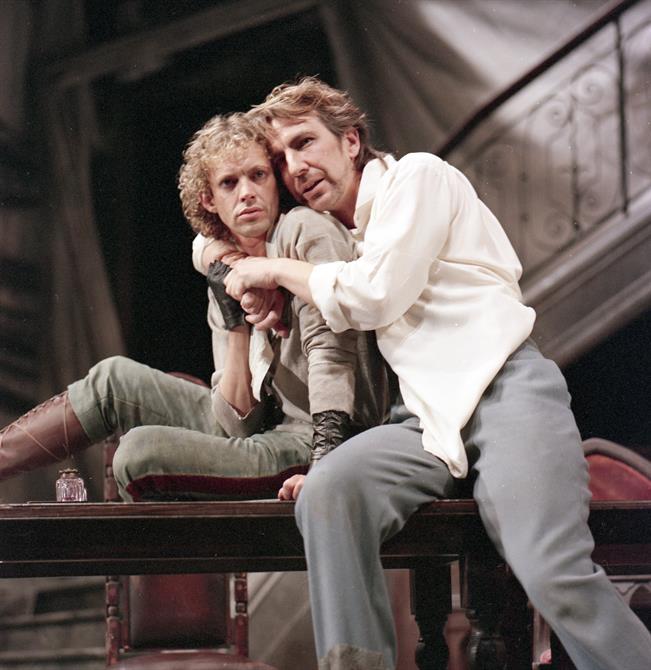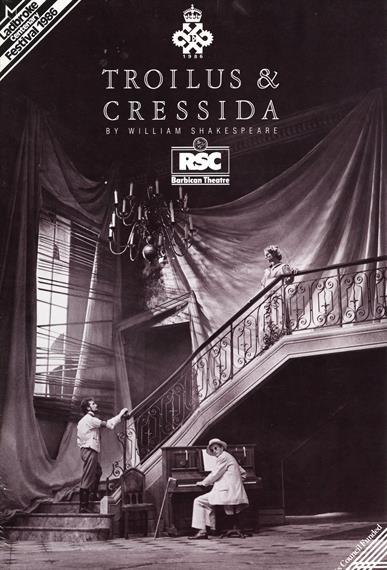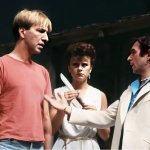Howard Davies updated the play’s action from the Trojan to the Crimean War of the 1850s.
RUINED GRANDEUR
Davies’ modernised production evoked a battered world in which the ravages of war reduced love to dust. Ralph Koltai designed a single set: the interior of a war-damaged mansion, complete with peeling pictures, broken shutters and a grandiose staircase.
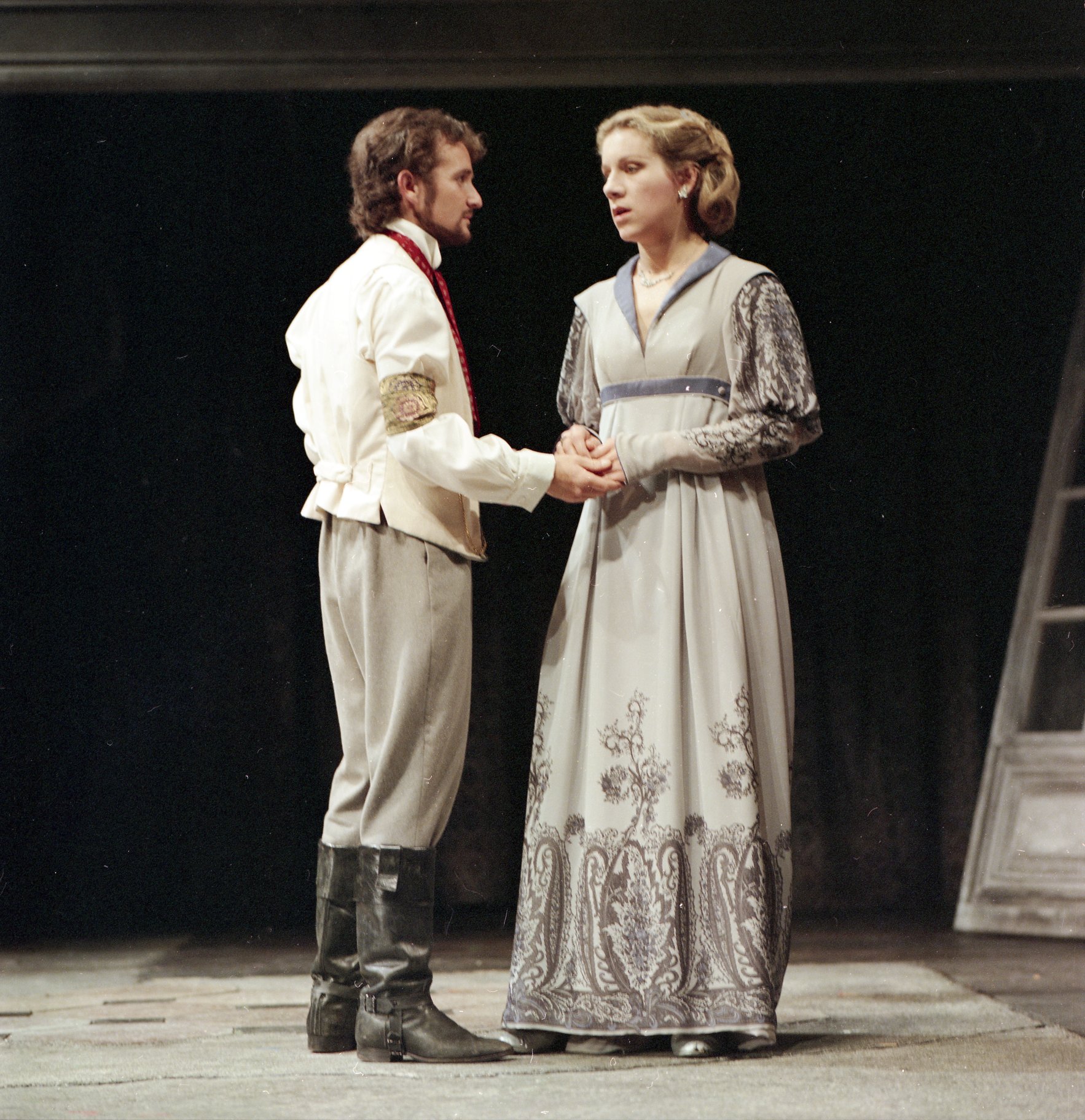
SINGLE SET
The Greek and Trojan camps occupied the same set so different furniture and props were used to indicate the distinct locations. The 19th century uniforms worn by the Greeks and Trojans were a similar style, so the main costume distinction was between the military and civilians.
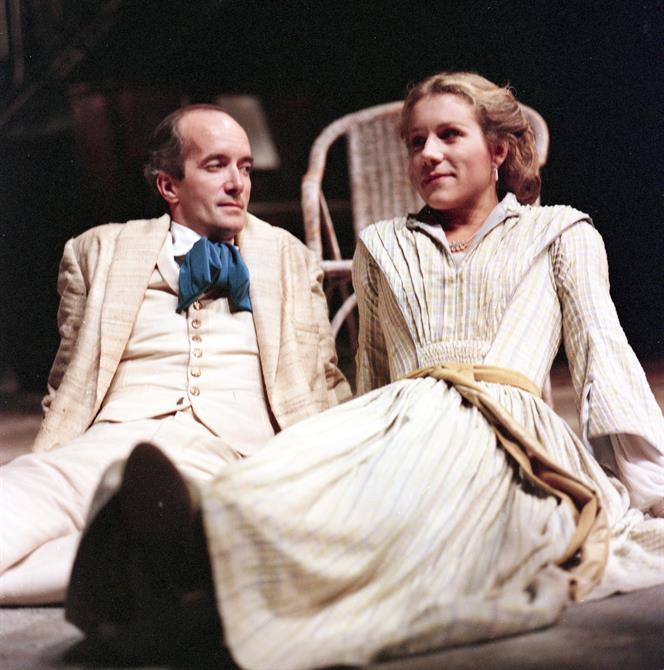
TWISTED ECHOES
An upright piano stood in the hall, on which Pandarus and others played Ilona Sekacz’s “twisted echoes of the waltzes and polonaises of the time” Iriving Wardle, the Times, 27 June 1985. The dissonant pastiche music combined with Jeffrey Beecroft’s lighting to enhance the unsettling effect of the crumbling set.
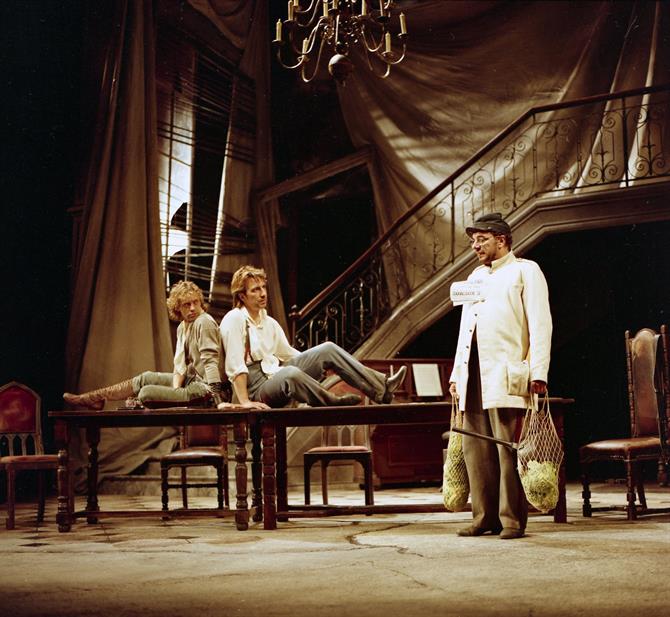
A STREETWISE CRESSIDA
By setting the play in the 19th century, the role of Cressida could be re-evaluated. So instead of the traditional faithless and flirtatious lover, Juliet Stevenson’s Cressida had a consistent underlying motivation to use her wits to survive in a male-dominated world. This meant shifting her allegiance from one male protector (Troilus) to another (Diomedes) in order to survive. For some critics this was a revolutionary and powerfully contemporary approach.
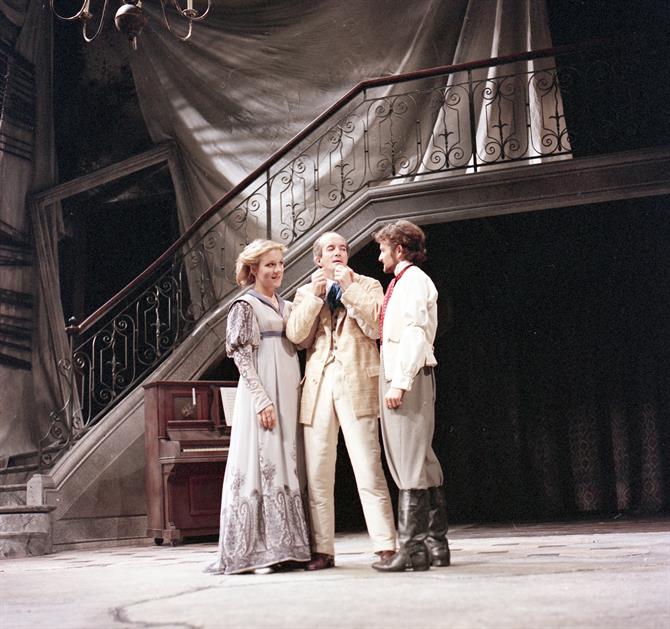
Stevenson explained her interpretation in an interview: “I see Cressida as streetwise: she knows what the game is and she plays it well. She knows that the only value women have in that society is their sexual worth. And her wisecracking with the men – which people have taken to be a sign of wantonness – is all part of her protection…if Cressida does not look after herself, no one else will.” ‘The Love That Knows No End’, Lynne Truss, The Times, 6 May 1986.
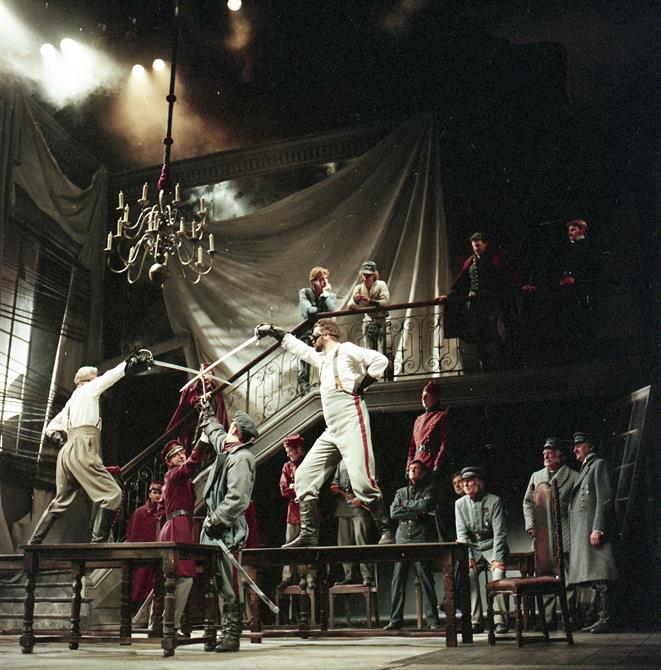
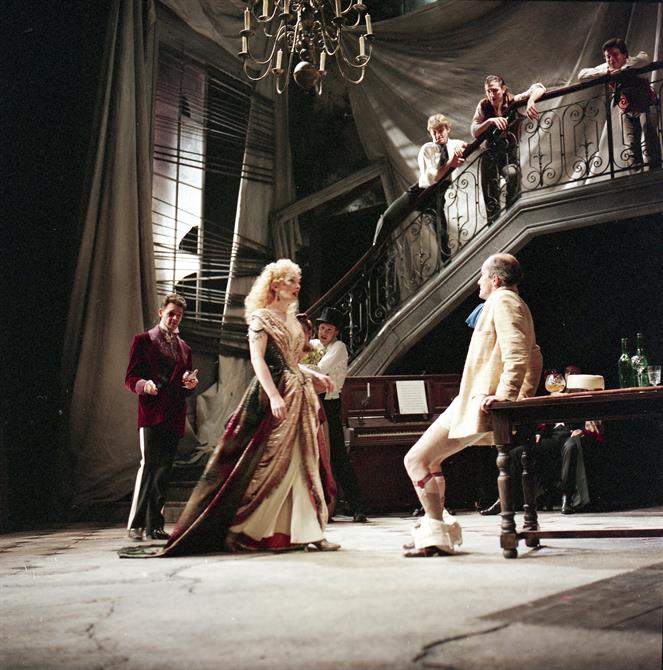
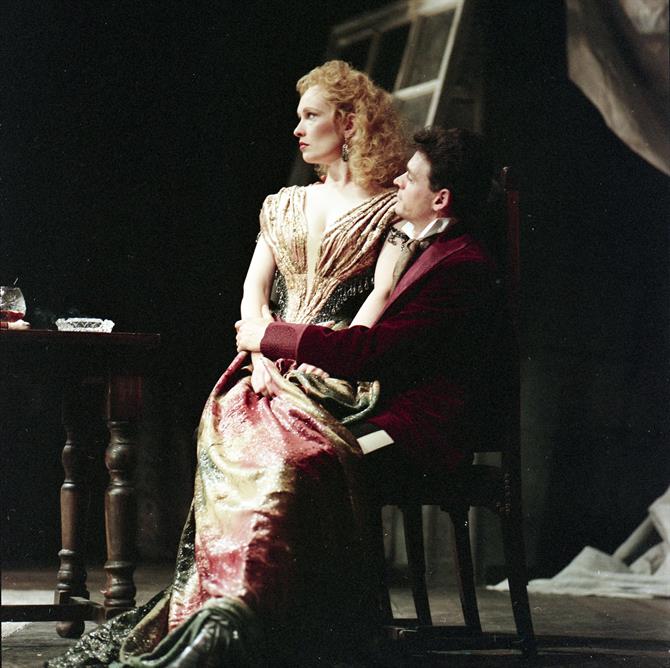

CAST AND CREATIVES
COMPANY
Royal Shakespeare Theatre
- Bruce Alexander – Diomedes
- Alun Armstrong – Thersites
- Sean Baker – Paris
- Russell Boulter – Troilus’ servant, Myrmidon
- David Burke – Hector
- Richard Conway – Calchas
- Janet Dale – Andromache
- Mark Dignam – Nestor
- Colin Douglas – Priam
- Lindsay Duncan – Helen
- Brian Horstead – Menelaus
- Roger Hyams – Alexander, Myrmidon
- Peter Jeffrey – Ulysses
- Anton Lesser – Troilus
- Gerald Logan – Prologue, Myrmidon
- Hilton McRae – Patroclus
- Clive Merrison – Pandarus
- Mike Murray – Officer, Myrmidon
- Joseph O’Conor – Agamemnon
- Mary Jo Randle – Cassandra
- Alan Rickman – Achilles
- Clive Russell – Ajax
- Hugh Simon – Officer, Myrmidon
- Paul Spence – Helenus, Margarelon
- Juliet Stevenson – Cressida
- Alexander Wilson – Aeneas
- Christopher Wright – Paris’ Servant, Myrmidon
- Geraldine Wright – Trojan Lady
- Andrew Yeats – Trojan Gentleman
CREATIVES
- Directors – Howard Davies
- Set Designer – Ralph Koltai
- Costume Designer – Liz Da Costa
- Lighting Designer – Jeffrey Beecroft, Clive Morris
- Music – Ilona Sekacz
